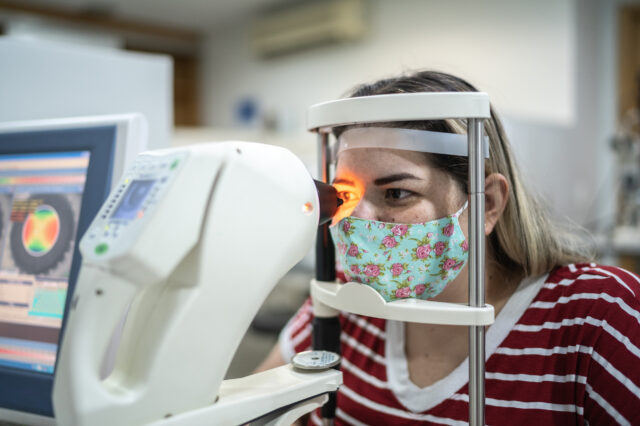Fighting blindness with research and exceptional ophthalmology care
November 30, 2023
UF COMJ faculty work to create positive outcomes for those with visual impairment and blindness.
Department of Ophthalmology, +4 more

Update your location to show providers, locations, and services closest to you.
UF Health Ophthalmology in Jacksonville is a leader in patient care and vision research. Combining the resources of the University of Florida with caring physicians and researchers, the department provides advanced care for patients throughout Northeast Florida and Southeast Georgia. Put better eye health in sight today with care by our highly specialized team of providers.
We offer a wide array of premier eye care services. Specialties include cataracts, glaucoma, macular degeneration, retinal diseases and uveitis. The department is on the leading edge of technology and has a wide array of diagnostic, laser and surgical instrumentation to perform complex procedures in-house.
UF Health Ophthalmology is a major center for retinal research, actively participating in major clinical trials sponsored by the industry and the National Institutes of Health. The department is also home to a residency training program. You will only find this combination of patient-focused care and innovation in an environment such as UF Health.





November 30, 2023
UF COMJ faculty work to create positive outcomes for those with visual impairment and blindness.
Department of Ophthalmology, +4 more

People with a cataract in one or both eyes experience blurry vision from the clouding of the eye’s natural lens
